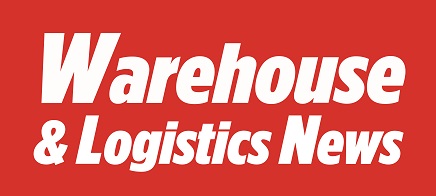We asked 20 business owners a straightforward question: “What does automating your warehouse involve?” Though the responses varied, a common thread emerged—everyone mentioned the long-term benefits of automation. However, they also spoke of the demanding journey: costly installations, lengthy implementation times, and several internal reorganisations. But is this challenging route always necessary?

“Automation in intralogistics doesn’t need to leap from 0% to 100% overnight,” explains Jonathon Buckby, Head of Sales at SSI SCHAEFER UK. “Full automation isn’t essential for every business, nor is every organisation ready to take the full plunge immediately. The right approach depends on volume, growth targets, and how your industry is evolving. In many cases, it’s best to start small and upgrade steadily—what we call ‘grow as you go.’
When and Why: The First Step
Let’s begin with the reasons and the timing. Companies that have already embraced automation shared why they made the move:
Mats Tornard, Project Manager of Strategic Supply Chain at Coop, added: “The productivity we achieve with automation simply can’t be matched through manual handling. We’ve observed many shifts in our industry, and automation has become essential.”
Matt Boschi, Operations Director at Draper Tools said: “We made a decision as a business in 2019 that we would consolidate our fulfilment facility to a single site. Within 6 months of going live we’ve seen an increase in our speed of picking, our speed of packing and out ability to dispatch quicker for our customers.”
Each business starts automation differently. Market leaders across pharmaceutical, cosmetics, fashion, food retail, and e-commerce have all pursued tailored projects. But don’t rush—conduct thorough research before deciding.
How Much to Automate
The level of automation that suits your business depends on size, growth rate, and other operational factors.
“Starting small is perfectly valid,” says Jonathon. “Even basic technologies can reduce manual labour. For instance, a conveyor system to link workstations or a Vertical Lift Module (VLM) for small part storage. A VLM saves floor space and improves picking accuracy.”
Automation doesn’t always start with hardware. A Warehouse Management System (WMS) is another valuable option. It enhances inventory control, improves item retrieval, supports order consolidation, and increases process visibility.
You can integrate equipment to form a cohesive system. For example, a VLM with a conveyor boosts efficiency dramatically. The VLM retrieves items automatically, while the conveyor moves them between stations—minimising walking time. Alternatively, Automated Guided Vehicles (AGVs) may offer more flexibility, especially in tight spaces. With safety features like motion trackers, AGVs work even in manual warehouses.
The biggest leap is full-scale automation, these solutions minimise manual work entirely.
“Still, the goal must always be operational improvement,” Jonathon stresses. “Technology should serve your business—not the other way around. Our experts at SSI SCHAEFER can help identify best practices.”
What to Automate
“Know your end goal,” Jonathon advises. “Then break it down step by step. Evaluate the product journey—from inbound to outbound—and improve each stage.”
Goods Receiving: Are items logged immediately? Are barcode scanners used? Automation here leads to clearer stock control and smoother replenishment.
Returns Handling: Especially vital for e-commerce. Sortation and future picking must be tailored.
Order Picking: Cut walking time with conveyors, AGVs, or robotics.
Shipping Zone: Auto-labelling and routing improve speed and accuracy.
Key Takeaways
Warehouses are critical to business success. They can boost—or hinder—sales performance.
“There’s a lot to consider,” Jonathon concludes. “Ask: Why upgrade your logistics centre? What’s your long-term goal? Are your processes ready? Where are the bottlenecks?
 Scalable systems support growth. No two businesses are the same. Our experts at SSI SCHAEFER can guide you—whatever your needs.”
Scalable systems support growth. No two businesses are the same. Our experts at SSI SCHAEFER can guide you—whatever your needs.”
Want more? Download our free automation guide or contact us today.




Comments are closed.